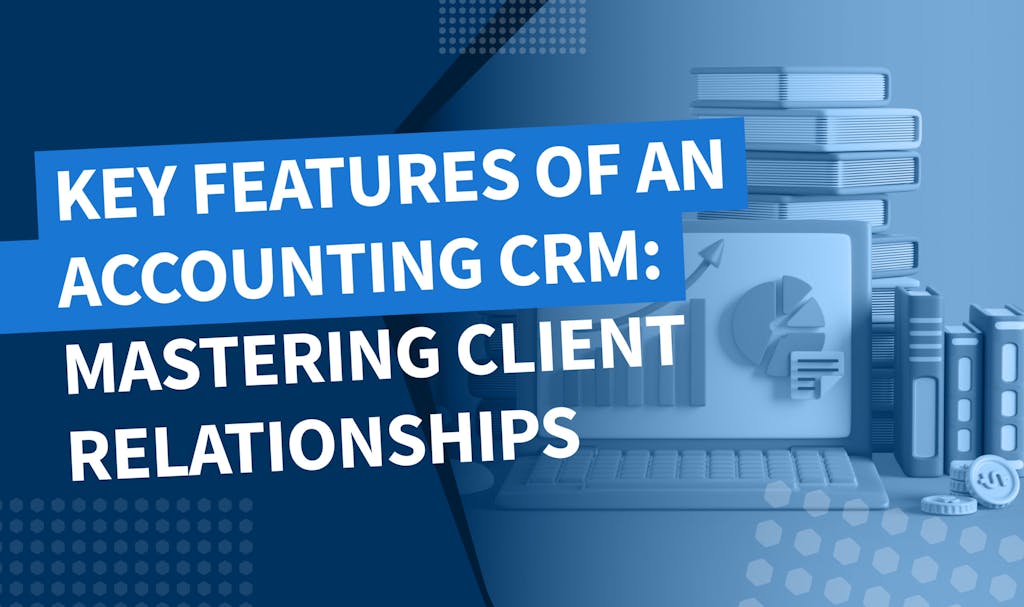
Whether you are a member of a major accounting firm or a one-person storefront, your operations will be a target for tax identity theft. Contrary to popular belief, these criminals are not one-person operations in a dark basement. Many of these criminals are managing sophisticated, well-funded operations using some of the most advanced cyberhacking technology. That’s why you need to take the necessary steps to protect your clients from tax fraud visa tax identity theft.
From using well-protected tax accounting software such as TaxDome to common-sense precautions, there are a number of ways to protect client information. Here’s a look at five ways at how to prevent tax fraud.
1) Protect Your Clients Against Tax Identity Theft
One of the most valuable targets for tax thieves is your client’s tax returns. Therefore, you will want to take the utmost precautions in protecting these documents. With stolen tax returns, the criminals will have access to all types of tax data as well as your client’s social security number. Stolen taxpayer information can allow criminals to open accounts, apply for credit cards, and apply for loans in the client’s name.
In addition to these obvious acts of fraud, criminals may use this stolen information in many other creative ways. For instance, a crimical may file a fraudulent tax return, engage in Medicare fraud or create false identity cards in the victim’s name.
One of the best tax security steps that you should take is always making all tax return information is transmitted and secured with top encryption technology. For instance, the accounting software platform TaxDome allows for the secure transmission of tax returns and client information using SSL certificates with 256-bit encryption. This is the highest level of encryption available from any accounting software platform.
2) Secure Taxpayer Information
Beyond securing tax returns, steps must be taken to secure all client information from potential data breaches. Here is some of the data that could be of value to potential hackers:
- Birthdate information
- Current address
- Former addresses
- Mobile phone number
- Social security numbers
So what specific steps should you take in order to protect your client’s tax identity information? Here’s a look at a checklist of 13 steps you can take today to keep your client’s information protected from potential data breaches:
- Securely dispose of taxpayer information – Make sure that no taxpayer information is disposed of intact. All physical copies should be shredded and all computer data should be secured erased when no longer needed.
- Require strong passwords on all computers and tax software programs – Make sure that all passwords have at least characters using a combination of uppercase and lower case letters. Also, be sure to include numbers and symbols.
- Require periodic password changes every 60 – 90 days – Old passwords can be especially vulnerable to data breaches. Therefore, passwords should be updated on a regular basis.
- Make sure all data is stored in a secure place – All taxpayer data should be secured with the latest anti-viral and firewall technology.
- Ensure that all data is transmitted using the latest encryption technology – All information should be encrypted using 156-bit technology from an SSL certificate.
- Encrypt and secure all email transmissions with client data – Emails can be especially vulnerable to compromise. Ensure that all emails with client data are sent in the most secure way possible.
- Secure all media and physical documents with client information – Be sure to restrict access to all hardware, devices and files that have client information.
- Be cautious about granting remote access to client data – Criminals may pose as a client, bank officer, or vendor in order to gain remote access to client data. Always exercise extreme caution when granting remote access to your systems.
- Restrict access of taxpayer information to current staff – Be sure to restrict access to your client’s taxpayer data to anyone who is no longer employed with your firm.
- Creat strict security requirements for current staff – Make sure that access to taxpayer data is restricted to current employees using two-step authorization or verification.
- Periodically train staff on data security – Make sure that your employees are periodically trained to ensure that they understand how to properly handle and protect taxpayer information.
- Protect physical access to your taxpayer information – Also, be certain that no unauthorized person can physically access taxpayer data.
- Have a plan in case of a data breach – Know how to quickly notify clients in the case of a data breach.
3) Apply Internal Control Methods
Sometimes the biggest threat to taxpayer data is not outside of your walls. You will also need to take steps to ensure that taxpayer information is protected internally. This includes carefully pre-screening candidates and authorizing certain employees access to taxpayer data.
Here are five steps that can help you protect taxpayer information from internal breaches:
- Terminate access to taxpayer information from former employees – If someone is no longer working at your firm, immediately terminate their access to taxpayer information.
- Encrypt all emails with taxpayer information – Be sure that you and your employees only send taxpayer information through encrypted email. Tax accounting software TaxDome uses bank-level security when it comes to the transmission of all taxpayer information.
- Have strict security protocols in place to access taxpayer information – All access to taxpayer information should require two-step verification or authorization.
- Update security often – Criminals are always improving their data breach techniques. Update your security often in order to remain one step ahead.
- Perform background checks on employees – Make sure that potential employees can be trusted with taxpayer information by performing a complete background check. This background check should include a credit report check as well as criminal history check.
4) Prevent Device-Centered Hacking
Criminals are always looking for vulnerabilities in a system. One of the weakest points in many accounting firms is their payment systems. Some accounting firms will use payment systems that do not use the latest security encryption protocols. This can allow hackers to divert or access payments.
Therefore, you will want to make sure that you only use a payment system that only uses multi-factor authorization. For instance, TaxDome only works with secure payment systems such as Stripe and CPACharge.
Beyond payment systems, there are other devices that are at risk. For instance, hackers can access any desktop, laptop, tablet, and mobile device that is not properly secured. Ensure that any device that is used to access taxpayer information is completely secured.
5) Perform Risk Assessment
Securing taxpayer information is not just about taking the right steps and moving on. You will have to perform periodic risk assessments to ensure that your client’s information remains secure. Here are six ways that you can assess the security level of your operations:
- Physically and virtually secure your facilities – Make sure that your physical location is secure with locks on all doors and a consistent inventory of all computers and storage drives with taxpayer information. Also, be sure that all virtual access to taxpayer information requires strong passwords and multifactor authorization.
- Create and follow an Information Security Plan – Create a plan for you and your employees to follow when it comes to protecting your client’s information.
- Train employees about basic cybersecurity measures – Make sure that your employees understand how to protect and secure their devices. Also, train employees on how to prevent and report any unauthorized attempts to access client information.
- Have a plan in place in case of a data breach – Have a plan to quickly notify clients in the case of a data breach.
- Identify risks and impacts of potential theft – Periodically check your physical and virtual security to look for any vulnerabilities in your operations.
- Maintain timely access to your systems – Make sure that you and your team always have timely access to your client’s taxpayer data.
- Have a reliable data recovery plan – Have a plan in place in case your data is restricted by a hacker or through an interruption in your system. This will allow you to continue operations no matter what is happening to your systems
Remember that it only takes one data breach to permanently ruin the reputation of a tax accountant or a tax accounting firm. Therefore it is important to take the security of taxpayer data. Periodic risk assessments will be one of the most effective ways to ensure that your clients’ information is secure.
Protecting Your Clients from Tax Identity Theft
Your client’s taxpayer information is always at risk of theft and compromise. That is why is it important to take all necessary steps to protect client information. One of the most effective ways to secure your client’s taxpayer information is through the all-in-one tax accounting software platform TaxDome. From payments to email and storage, TaxDome uses bank-level security to ensure that your client’s taxpayer data is secure. If you would like a demonstration of TaxDome’s all-in-one accounting software, request a live demo today.

Thank you! The eBook has been sent to your email. Enjoy your copy.
There was an error processing your request. Please try again later.
Looking to boost your firm's profitability and efficiency?
Download our eBook to get the answers



